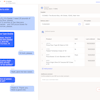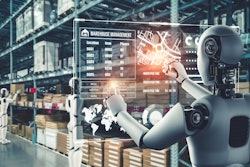
As the supply chain management industry continues to evolve to meet changing customer demands placed on shippers and suppliers, many organizations are adopting new digital tools to give awareness of current conditions, learn more about their operations, respond to inquiries faster, keep their employees safer and operate at the highest levels of efficiency. However, meeting that demand is more challenging than ever before. Supply chains have been completely overwhelmed, labor shortages have required doing more with fewer on-site staff and increases in orders and returns are overwhelming available employees. These changes highlight the clear need for better visibility into supply chain operations, and there’s now a way to do more with on-site video cameras that can increase situational awareness and safely manage a changing world.
For years, companies have deployed various security cameras and systems, and several vendors now offer intelligent solutions that include motion detection or image analysis, even providing real-time alerts. Video surveillance technology has advanced significantly in the past few years with the rise of artificial intelligence and computer vision capabilities. Customer use cases also now extend beyond simple theft deterrence or reviewing archived footage. Modern solutions that include embedded artificial intelligence (AI) and specialized analytics can even provide real-time insights that support your safety and efficiency initiatives. By using non-proprietary solutions that can integrate with third-party cameras, customers can leverage their existing investments, instantly adding intelligence to a previously installed set of cameras.
While traditional camera systems have been effective at capturing what happened in the past, they can have serious limitations. For one, most systems store captured video on-site, which can require a site visit to review the footage. Also, people usually have to manually scan hours of video to see what actually happened. Finally, it’s not really possible to give different people different levels of access to the video or see what’s happening in real-time, and real-time awareness is more important than ever.
The good news is, connected video solutions enhanced by AI can now be leveraged to access, analyze, and act upon real time data to more effectively manage supply chain operations. Here’s how:
- Reduce product shrinkage. While there are many solutions that capture production, delivery, and transfer of goods, few organizations also leverage camera systems to monitor site operations. Advanced video monitoring systems can review why and how goods were damaged, which protocols were and were not followed and notify of unplanned downtime. For faster processing when vehicles enter a truck yard or dock, you want a system that can offer real-time alerts to site managers. Streamlining investigation allows operations leaders to find, review and share footage quickly and easily.
- Prevent theft. One of the rising problems on job sites is the increase in catalytic converter thefts. According to the National Insurance Crime Bureau, the number of reported catalytic converter thefts increased from roughly 1,300 in 2018 to more than 52,000 in 2021. That’s an increase of roughly 1,215%. Replacing a catalytic converter can cost $3,000 plus labor, and the drastic increase of thefts means replacements are in short supply. To prevent theft, organizations need smart security cameras in their employee parking lots that offer real-time visibility, including close monitoring of vehicles and locations, high-resolution and easily-searchable video evidence, with proactive alerts that sent directly to phone or email with any unusual activity. Even if you can’t respond right away, this enhanced video footage allows users to quickly and simply share evidence for a police report or insurance investigation.
- Decrease detention time. A non-operating dock can cost up to $1,700 per hour, so companies need to look at how they utilize each bay to maximize potential. The faster you can get vehicles back on the road, the faster and more efficiently you can complete more deliveries. An advanced video management system allows companies to have both real-time and historical visibility into their operations, which allows managers to proactively handle onsite issues and improve efficiency. It also captures and stores footage of loading and unloading, allowing review of dock activities and the creation of coaching plans that both improve dock efficiency and reduce detention time.
- Minimize workplace injury. In a typical year, there are 2.7 million workplace injuries in the private sector in the United States. In 2019, the manufacturing sector alone had over 395,000 reported workplace injuries. In order to operate efficiently, organizations must have proper safety protocols, timely investigation of incidents and provide ongoing coaching that helps employees improve their work habits. Smart video solutions can also use AI to identify unsafe behavior and proactively promote safe behaviors. If a camera sees a worker without their safety vest on or entering an unsafe zone, a smart video system can send an instant alert. Video analytics features allow users to easily find and share evidence with insurance companies for workers compensation claims, and also to build a library of clips for ongoing employee coaching. Real-time alerts are crucial to help employers respond immediately to unsafe situations.
- Focus on employee productivity. AI-powered video systems can also help build a stronger company culture and improve employee morale. These cameras support a variety of key employee processes, from skills training to safety coaching to remote site check-ins, allowing companies to implement best practices and stay in compliance. Training libraries and the direct, individualized coaching that’s possible as a result can also improve employee’s confidence and morale, which has been known to increase organizational productivity. The right connected video solutions can also cut field-service costs by up to 40% and vastly reduce the need for executive travel by allowing supervisors to monitor multiple sites without leaving their office, saving time and money.
When you look at the grainy images provided by the older cameras at many sites and compare to the high-quality video used on phones, it’s obvious that there’s an opportunity to improve safety and visibility on the job site. AI-powered video cameras allow organizations to do more with what they already have by reducing product shrinkage, preventing theft, decreasing detention time, helping to minimize workplace injury and allowing you to focus on employee productivity. Companies in the manufacturing, logistics and distribution industry are all looking for ways to increase real-time awareness to create new opportunities and improve productivity, safety and security at their facilities. Taking a look at what’s possible with a smart, AI-based video surveillance system may help transform your business.




















